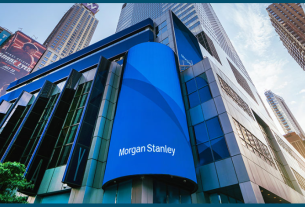In today’s fast-paced and ever-evolving business environment, innovation is often seen as the key to success. Companies strive to harness new ideas, create disruptive technologies, and develop solutions that can give them a competitive edge. However, despite the immense value that diversity of thought and experience can bring, unconscious bias and discrimination in the business ecosystem continue to pose significant barriers to growth, creativity, and overall profitability. These biases not only prevent potentially profitable ideas from reaching their full potential but also contribute to a toxic, cartel-like culture that undermines meritocracy and creates lasting harm to both individuals and organizations.
Understanding Unconscious Bias and Discrimination
Unconscious bias refers to the automatic, unintentional judgments or stereotypes that people make about others based on their race, gender, age, or other personal characteristics. Unlike overt prejudice, unconscious bias operates below the surface, influencing decisions and behaviors without individuals even being aware of it. In the business world, unconscious bias can manifest in hiring practices, promotion decisions, team formation, and project allocation, often disadvantaging women, people of color, LGBTQ+ individuals, and other marginalized groups.
Discrimination, on the other hand, refers to the deliberate or systemic mistreatment of individuals based on their membership in a particular group. It may result in exclusion from opportunities, unequal pay, or barriers to career advancement. When combined, unconscious bias and discrimination create a powerful force that limits the diversity of ideas, perspectives, and talents in the business ecosystem.
How Bias and Discrimination Stifle Innovation and Profit Potential
Innovation thrives in environments where diverse ideas are encouraged, where different viewpoints are valued, and where collaboration among individuals with various backgrounds leads to creative solutions. However, unconscious bias and discrimination create homogenous environments that limit diversity. Studies have consistently shown that diverse teams are more innovative and effective at problem-solving because they can approach challenges from multiple perspectives.
When people are excluded from key decisions or innovation processes based on biased beliefs, businesses lose out on the potential for groundbreaking ideas and solutions. For instance, when hiring or promotion decisions are biased, companies may overlook talented individuals simply because of their race, gender, or background. These overlooked individuals might have been the ones to drive the next big product innovation or breakthrough strategy, but their potential remains untapped due to systemic discrimination.
This issue is especially critical in sectors like technology, where diverse teams can lead to the creation of more user-centric products. In the tech industry, for example, the lack of diversity in decision-making has been linked to failures in product design, such as biased algorithms or underrepresentation in consumer products, all of which can significantly impact a company’s bottom line.
The Psychological Toll of Unconscious Bias and Discrimination
The impact of unconscious bias and discrimination goes beyond missed business opportunities. Individuals who experience discrimination or are subject to biased treatment often suffer from significant psychological and emotional tolls. Research has shown that discrimination in the workplace can lead to higher levels of stress, anxiety, and depression among employees, which directly affects their overall well-being and productivity.
For those from marginalized groups, constant exposure to bias can lead to what is called “stereotype threat,” where individuals feel pressure to prove themselves in ways that affect their performance. This phenomenon is common in workplace settings where employees are not only expected to excel but also to work against societal stereotypes that paint them as less competent or capable.
Additionally, individuals who feel excluded or undervalued are less likely to stay in an organization long term, leading to higher turnover rates, reduced morale, and a lack of trust in leadership. In turn, this contributes to an unhealthy organizational culture, where talent retention becomes a constant challenge.
Cartel-like Behavior and Its Impact on Innovation
In addition to stifling creativity and well-being, unconscious bias and discrimination contribute to the rise of cartel-like behavior within organizations. This refers to the formation of exclusive networks, often based on shared characteristics such as race, gender, or social background, that operate to maintain power and access to resources for a select few. These networks are often resistant to change and work to protect their own interests, sometimes to the detriment of the business.
Cartel-like behavior can lead to a lack of accountability, favoritism in decision-making, and the exclusion of talented individuals who are not part of these closed circles. In such environments, innovation is squashed, as new ideas that challenge the status quo are not given a fair chance to be explored. Moreover, employees from underrepresented groups who challenge these networks may face even harsher treatment, including retaliation or being marginalized.
This behavior can permeate various layers of a business ecosystem, from the hiring process to team management, creating a culture of exclusivity and inequity. As businesses continue to become more global and diverse, the presence of such behaviors can lead to reputational damage, legal challenges, and a lack of trust among employees and stakeholders.
Mitigating Unconscious Bias, Discrimination, and Cartel-like Behavior
While it’s clear that unconscious bias and discrimination have far-reaching consequences for both individuals and organizations, there are several steps that businesses can take to mitigate these issues and create a more inclusive, innovative, and healthy environment.
1. Implementing Bias Training and Awareness Programs
Organizations should invest in regular unconscious bias training for all employees, from leadership to staff. This can help individuals recognize their own biases and take proactive steps to counteract them. Leaders should be trained to identify biased behavior and create an environment where open conversations about diversity and inclusion are encouraged.
2. Strengthening Diversity and Inclusion Initiatives
Companies need to prioritize diversity and inclusion at all levels. This includes making a concerted effort to recruit, retain, and promote individuals from underrepresented groups. Companies can also establish mentorship programs to ensure that all employees have equal access to leadership and development opportunities, regardless of their background.
3. Revamping Hiring and Promotion Practices
Organizations should adopt unbiased recruitment methods, such as blind hiring or standardized evaluation criteria, to ensure that hiring and promotion decisions are based solely on merit. Additionally, performance reviews should be structured to minimize subjective biases and focus on objective measures of performance.
4. Fostering an Open and Transparent Culture
Building a culture of transparency is essential in mitigating cartel-like behavior. Leaders should encourage open communication, where employees can voice concerns without fear of retaliation. Businesses should create systems that promote accountability, such as regular audits of hiring, promotion, and compensation practices to ensure fairness.
5. Measuring and Reporting Diversity Progress
To ensure that diversity and inclusion efforts are effective, companies must track and report progress regularly. This includes setting clear diversity goals, measuring success, and making adjustments when necessary. Publicly sharing these metrics can also help build trust with employees and stakeholders, reinforcing the company’s commitment to diversity.
Conclusion
Unconscious bias, discrimination, and cartel-like behavior pose significant challenges in today’s business ecosystem. These factors not only limit innovation and profitability but also contribute to a toxic work environment that harms the psychological well-being of employees and undermines long-term success. However, by taking proactive measures to address bias, promote inclusion, and create fair systems, businesses can unlock the full potential of their diverse workforce, foster innovation, and thrive in an increasingly competitive market.
References
- “How Unconscious Bias Holds Women Back in the Workplace,” Harvard Business Review.
- “The Impact of Unconscious Bias on Women and Minorities in the Workplace,” McKinsey & Company.
- “Unconscious Bias and Its Impact on Business Innovation,” American Psychological Association.
- “Why Diversity Matters,” Boston Consulting Group.
- “The Rise of Cartel-like Behavior in Organizations,” Journal of Business Ethics.



